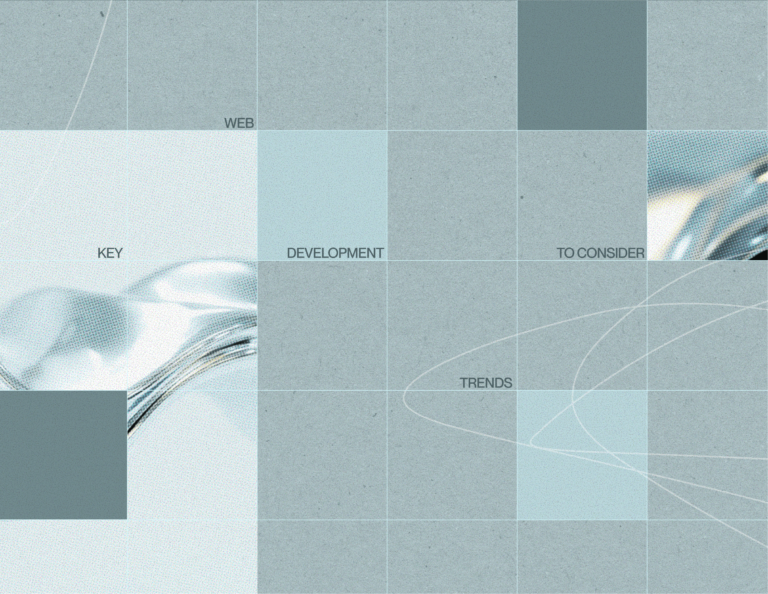Outline:
Choosing a reliable web-design partner can feel like scrolling an endless feed of glossy screenshots. Yet how to evaluate a website design goes far beyond picking the prettiest pictures. In the next few minutes you’ll learn a clear way to read any agency’s portfolio like a pro, so you can spot real value instead of surface shine.
Define Success Before You Even Peek at a Portfolio
A portfolio only matters if the work inside can hit your business goals. So, pause the scrolling and answer one question: What do I need my next website to achieve? Keep it to the essentials—more enquiries, more sales, stronger credibility. By locking those targets in early, you’ll have concrete evaluation criteria of websites to measure against, not just a gut feeling about “nice-looking.”
Translate Business Goals into Concrete Design Requirements
Next, turn each target into a concrete website function. Need more leads? You’ll care about clear CTAs, lightning-fast forms, persuasive micro-copy. Want bigger carts? You’ll focus on streamlined checkouts, cross-sell modules, and trust badges. By connecting dots between goals and features, you’ll review portfolios with a definite purpose.
Thus, if the portfolio shows a clear “before and after” lift on metrics that match your goals, you’ve found proof they know how to evaluate a website design and, more importantly, how to make one succeed for your small business or big enterprise.
Look for Strategy, Not Just Screenshots
Now that your objectives are locked, slide into the portfolio itself. An agency worth your budget won’t showcase random images; they’ll spell out the thinking that led to every design choice.
The Project Narrative: From Discovery to Measurable Outcomes
- Discovery
Start by hunting for proof that the team stepped out into the real world before opening Figma. A strong portfolio mentions user interviews, heat-map reviews, stakeholder workshops, even a quick competitive teardown. - Design
Next, read how those insights turn into concrete choices. Wireframes, prototypes, micro-copy drafts and color swatches should all tie straight back to the Discovery findings. When a caption says, “We placed the CTA above the fold because 60 % of mobile users never scrolled,” you know the team is solving a problem, not chasing a trend. If you see vague notes—“modern look, bold palette”—without a “why,” flag it. You need rationale, not adjectives. - Measured Outcome
Finally, scan for numbers that prove the new site earned its keep. Phrases like “bounce rate dropped by a third,” “checkout time fell from three minutes to ninety seconds,” or “lead volume jumped 22 % in two months” show a direct link between design moves and real-world gains. For extra certainty, open the live site and run a quick speed or usability test yourself; up-to-date data should echo the case study’s claims.
Call Out the Warning Signs
If you hit a string of random screens with no back-story, or award logos take up more space than performance stats, step back. Likewise, buzzwords—“human-centred,” “user-first,” “innovative”—without any quoted research or metrics often signal surface work. A credible agency knows that your evaluation criteria of websites live also in data, not only decoration.
By tracing this case-study arc —Discovery, Design, Measured Outcome—you’ll cut through the gloss, stay focused on useful insight, and judge each portfolio against the numbers that matter to you. That’s the practical route for any website design evaluation worth your time and budget.
Market Understanding: Can They Navigate Your Business Landscape
Great, you’ve seen their thinking. But can they handle your business terrain? This section picks up from strategy and dives into domain know-how.
Specialization vs. Cross-Industry Expertise: Weighing the Benefits
A niche agency breathes your vocabulary, knows your regulations, and probably has ready-made integrations. That’s gold if you’re in a highly regulated or complex space. Meanwhile, a cross-industry studio brings fresh eyes, breaks echo chambers, and may innovate faster. Decide which flavour suits your risk appetite.
Assessing Adaptability: How Quickly Can They Learn and Deliver
Even if the agency hasn’t tackled your precise niche, look for evidence they ramp up fast: rapid prototypes for an unfamiliar sector, side-by-side comparisons of compliance hurdles, multilingual roll-outs delivered on tight timelines. Those examples shout “quick study.”
Run the Complexity Checklist
As you skim, ask: do their projects show:
• regulatory compliance (think GDPR pop-ups or HIPAA forms)?
• multilingual or multi-currency setups?
• heavy API or ERP integrations?
If you can tick two of those, odds are they can tackle your own complexity without melting the schedule.
Peeking Behind the Curtain: Collaboration & Project Management Proof
Understanding your market is one thing; working well with you is another. This section bridges the gap by digging into process clues.
Transparency in Workflow: Evidence of an Open Process
Strong portfolios showcase sprint boards, wireframe snapshots, or workshop photos. These artefacts reveal how decisions were made and how often clients saw progress. A single “big reveal” slide deck? That usually means surprises—and scope creep—later.
Watch the Communication Cadence
Do case studies mention weekly demos, Slack channels, or live Figma commenting? Frequent, structured touch points signal a team that stays in sync. Radio silence between milestones hints at headaches down the road.
Listen to the Client’s Voice
Testimonials that rave about “responsiveness,” “clear timelines,” and “smooth hand-offs” outshine any ego-boosting award. The people who’ve already paid the bills are your best reality check.
Post-Launch Success & Partnerships Criteria
Smooth collaboration sets you up for launch day; long-term support keeps the win rolling. This section follows naturally, because what’s the point of great teamwork if the agency ghosts you after go-live?
Demonstrating Long-Term Growth: Beyond Go-Live Metrics
Look for six- or twelve-month follow-ups: organic traffic up, conversion rates climbing, support tickets dropping. When a portfolio circles back with fresh data, you know the agency tracks success, not just finishing lines.
Commitment to Optimization: Evidence of Continuous Improvement
A/B test screenshots, monthly KPI reports, or iterative design tweaks show the team stays engaged. That mindset is priceless when algorithms shift or customer habits change.
Confirm the Safety Net: SLAs and Retainers
If the portfolio talks about maintenance plans, security patches, or UX sprint cycles, you’re reading about a partner, not a project vendor. In a strong website design evaluation, that’s a major tick.
Lock in these three checkpoints and you’ll know the agency can drive growth long after launch—turning a one-off build into an enduring business asset.

Trust Signals Beyond the Agency’s Own Site
You’ve checked strategy, teamwork, and long-term wins; now step outside the agency’s bubble and find out how the world rates them—and whether their own house is in order.
- Balance Awards with Objective Ratings
Industry trophies are nice, but star-ratings on Clutch, G2, or Google often paint a truer picture. An agency that lists both is proud of peer recognition and customer satisfaction—double credibility. - Gauge Their Public Voice
Jump over to LinkedIn, X, or even niche Slack channels. Is the team sharing insights, answering questions, and sparking genuine dialogue—or just blasting promos? A helpful social presence proves they can explain ideas clearly and stay atop industry shifts—key ingredients in any believable website design evaluation partner. - Audit Their Own Website Experience
If an agency preaches “fast, user-first design,” their site should load in a blink, guide you smoothly, and meet WCAG basics. Run a Lighthouse scan, fill in a contact form, skim the blog. If you hit broken links, sluggish pages, or dated styling, trust erodes on the spot. Remember: their site is the first live proof of their evaluation criteria of websites.
Red Flags That Should Make You Scroll On
All the green lights in the world can’t outshine one flashing red. Keep these danger signs front of mind:
- Portfolio pieces with no live links—or links that 404.
- One-size-fits-all layouts, fonts, or icon packs reused across clients.
- Slides stuffed with jargon instead of data.
- Awards and accolades hogging space where metrics should live.
Spot two of these and your website design evaluation just saved you a costly mistake.
On a Final Note
A good portfolio should connect the dots—your business goals, the agency’s thinking, and the results that followed. Once you’ve matched those threads, the remaining choice is straightforward: pick the team whose past work shows they can move the same numbers you care about. With this focused set of website design evaluation checkpoints in hand, you can scan portfolios quickly, press for the right evidence, and sign with confidence.
Ready to see how our own projects stack up against your goals? Contact us for a no-pressure portfolio walkthrough, and let’s find the fastest way to turn your objectives into live results.




